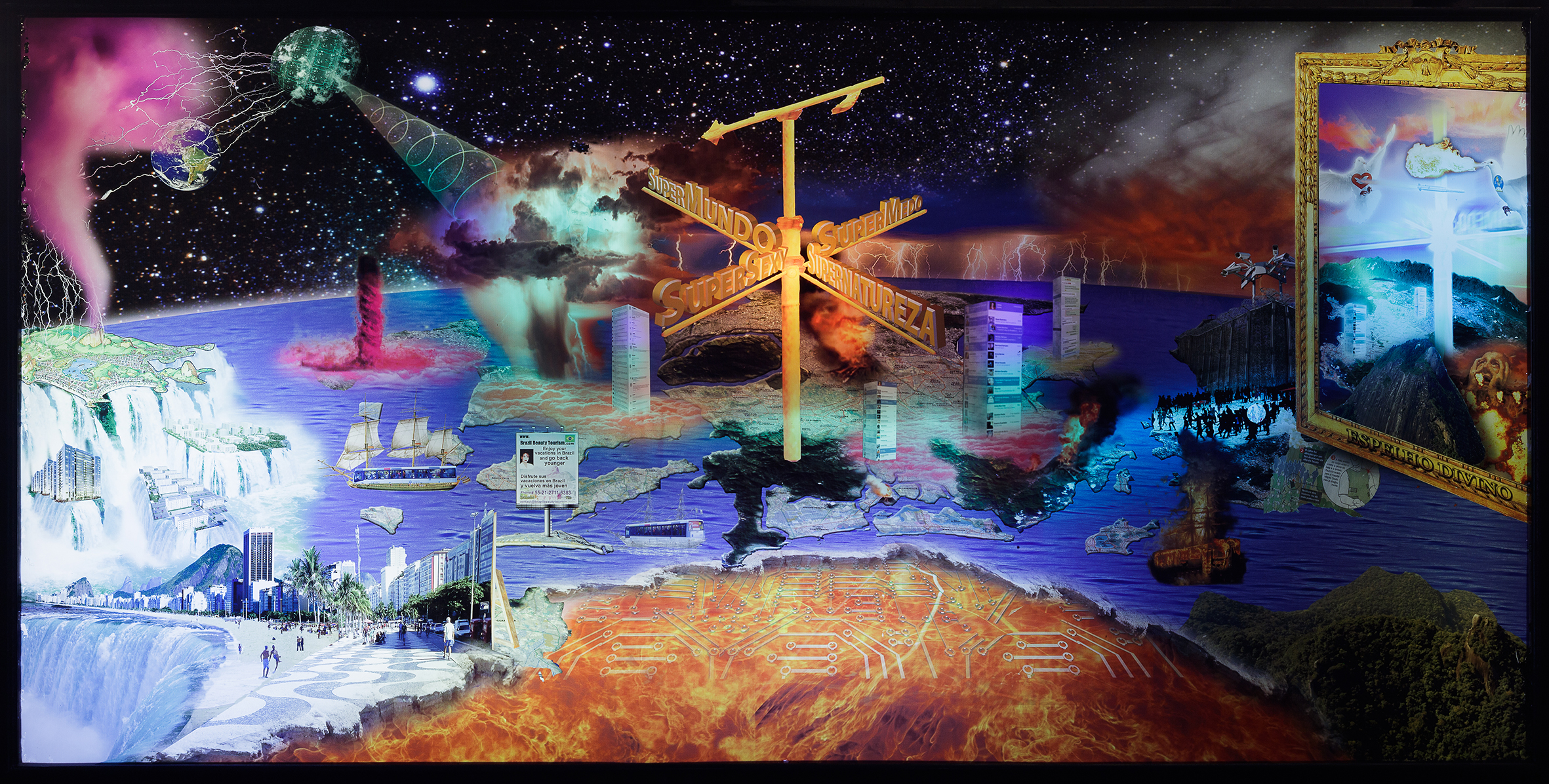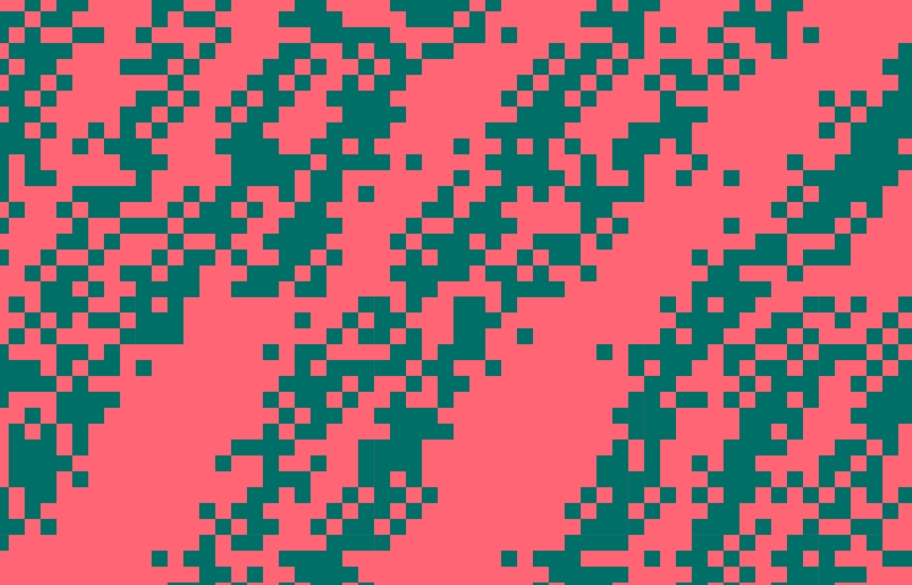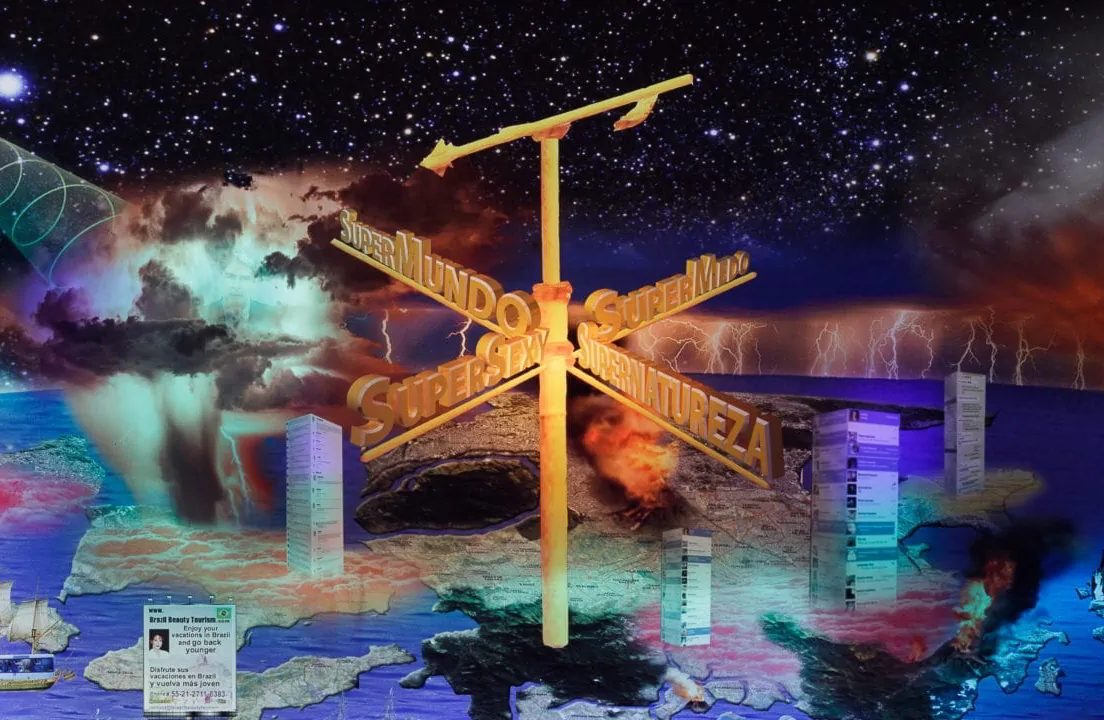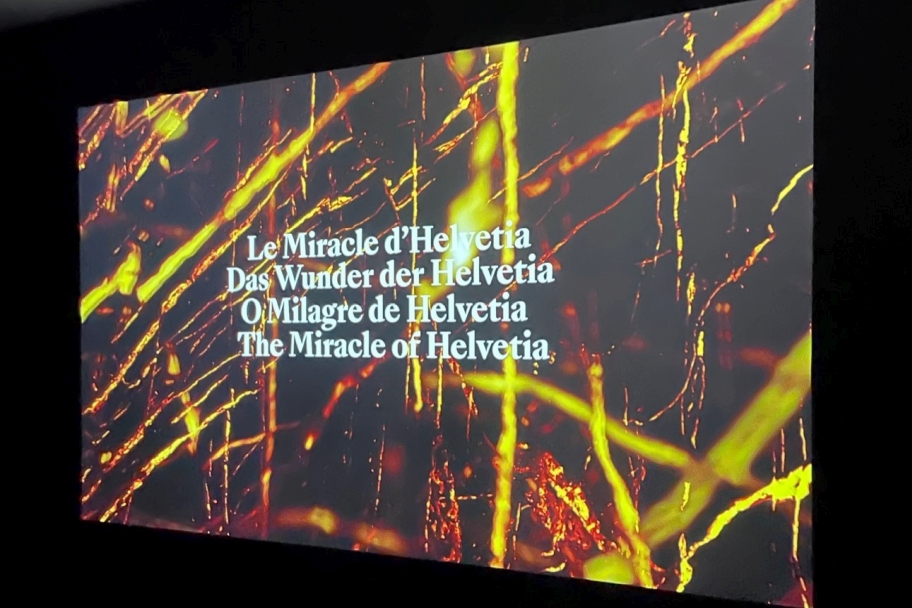Brazil, Visual Arts, 2021
Guerreiro
do Divino Amor

Since 2005, the Swiss-Brazilian artist Guerreiro do Divino Amor has been developing Superfictions (Superficções), a project that analyzes the evolution of metropolitan regions and nations by shedding a critical and often ironic light on the underlying social, political, economic, religious, moral, and cultural forces that shape their identity.
Guerreiro do Divino Amor combines his personal experience of living in the places he fictionalizes with a kind of digital archaeology, unearthing from the tangled web of online material the iconographies which he appropriates and transforms into fables and narratives. So far, Brussels, Rio de Janeiro, São Paulo, Brasília, Belo Horizonte, and Switzerland make up the different chapters of the artist’s superfictional universe, joining national and local histories, characters, myths, archetypes, memories, and fantasies.
For all of these contexts, Guerreiro has created films that spin off into installations, publications, and panels. With its lush aesthetics and a profusion of effects and semantic connections, his work exposes the messianic dimension of imperialist ideology and its modern iterations, providing a satirical comment on its justification as a “civilizing project.”
Sensitive to hegemonic ambitions and transnational disputes, Guerreiro do Divino Amor is interested in exposing the methods of colonialism, capitalism, statism, racism, democracy, knowledge, religion, the media, as well as corporations and other organizations such as cultural institutions that are responsible for the production and preservation of inequality in the world.
Ever since its first chapter (The Battle of Brussels, 2005), Superfictions has focused on the primordial war between the Superempire and the Supergalaxy as allegorical embodiments of antithetical concepts such as West/East, developed/underdeveloped, mother country/colony, and modern/archaic. As the artist notes, this war is waged between “dichotomous civilizations that fight for the control of space and human minds.” While the Supergalaxy acts on “uncoordinated impulses,” the Superempire “is a rational battle machine, commanded by superconsortia.”
In unmasking and challenging (neo)colonial tendencies, the ethical and political significance of Superfictions differs from the “humanist” critique made in defense of the “victims of imperialism.” The artist does not subscribe to the ethnographic tradition, prevalent in both art and anthropology, that insists on giving “visibility” and a “voice” to those people and communities that have historically been cast as subaltern and that engages with “the cultural and/or ethnic other.”1 Instead, moving away from the primitivist fetish of the “suffering slot”2, Guerreiro do Divino Amor reverses the ethnographic perspective and seeks to reveal the racist, extractive, patriarchal, ecocidal, epistemicidal, and narcissistic forces at work in the “well-intentioned civilizational project.”
As an artist with both European and Latin-American roots, Guerreiro do Divino Amor engages in a process of self-reflection involving his own ancestry and inherited privileges, which he uses as a locus to illustrate the historical production of (neo)colonial violence. Addressing whiteness, eurocentrism, and ethnocentrism, Superfictions is a critical project that takes the artist’s own life and identity as a starting point and maps them onto the territories and relationships that have left their mark on him. Now the time has come for Germany.
Text: Clarissa Diniz de Moura
(1) Hal Forster, “The artist as ethnographer,” in id., The Return of the Real, Cambridge/Mass.: The MIT Press, 1996, p. 173.
(2) Joel Robbins, “Beyond the suffering subject: toward an anthropology of the good,” Journal of the Royal Anthropological Institute, vol. 19, no. 3, 2013, p. 448.




